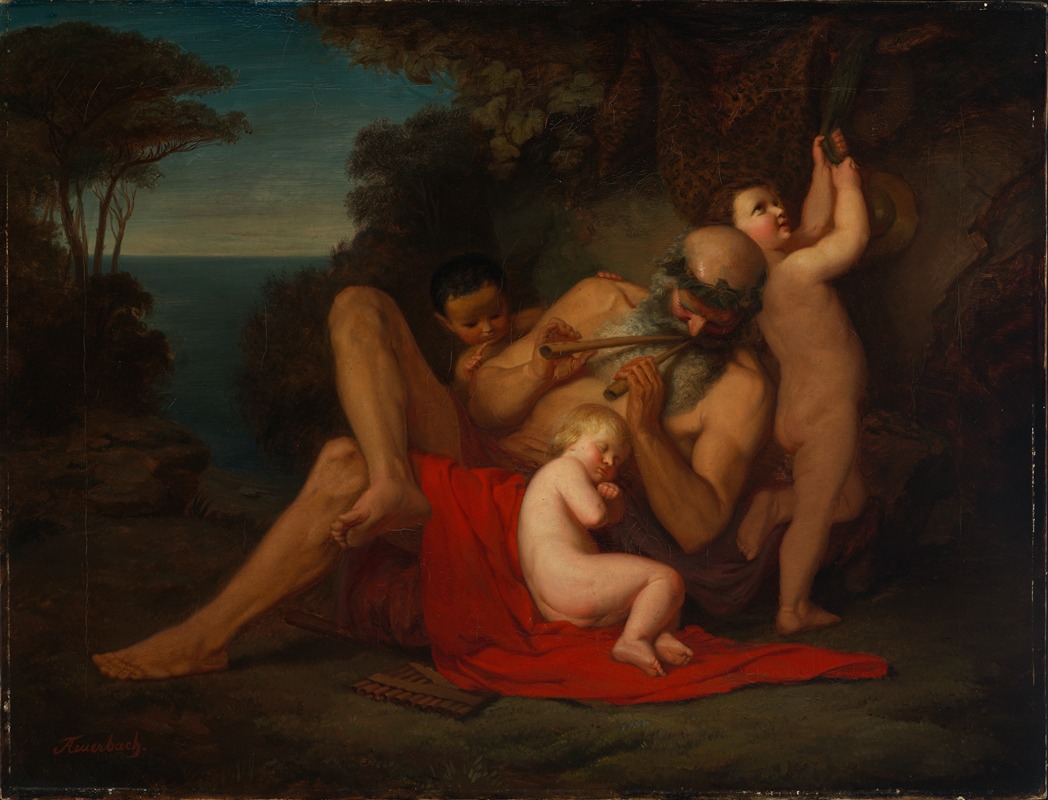
Silen mit schlafendem Bacchusknaben
A hand-painted replica of Anselm Feuerbach’s masterpiece Silen mit schlafendem Bacchusknaben, meticulously crafted by professional artists to capture the true essence of the original. Each piece is created with museum-quality canvas and rare mineral pigments, carefully painted by experienced artists with delicate brushstrokes and rich, layered colors to perfectly recreate the texture of the original artwork. Unlike machine-printed reproductions, this hand-painted version brings the painting to life, infused with the artist’s emotions and skill in every stroke. Whether for personal collection or home decoration, it instantly elevates the artistic atmosphere of any space.
Anselm Feuerbach was a prominent German painter of the 19th century, known for his classical style and historical themes. One of his notable works is "Silen mit schlafendem Bacchusknaben" (Silen with Sleeping Bacchus Boy), which exemplifies his mastery in depicting mythological subjects with a sense of realism and emotional depth.
"Silen mit schlafendem Bacchusknaben" is a painting that draws from classical mythology, a common source of inspiration for Feuerbach. The painting features Silenus, a figure from Greek mythology often associated with Dionysus, the god of wine. Silenus is typically depicted as an older, wise, and often inebriated companion of Dionysus. In this artwork, Silenus is shown with a young Bacchus, also known as Dionysus in Roman mythology, who is depicted as a sleeping child. This portrayal highlights the nurturing and protective aspect of Silenus, contrasting with his usual depiction as a figure of indulgence and revelry.
Feuerbach's approach to this mythological subject is characterized by his use of classical composition and attention to detail. The figures are rendered with a sense of realism that brings the mythological scene to life, while the composition reflects the influence of Renaissance and classical art, which Feuerbach admired and studied extensively during his time in Italy. The painting's serene and contemplative mood is enhanced by the use of soft lighting and a harmonious color palette, typical of Feuerbach's style.
The painting is significant not only for its artistic qualities but also for its reflection of the 19th-century European fascination with classical antiquity. During this period, many artists and intellectuals looked to ancient Greece and Rome for inspiration, seeing these cultures as the pinnacle of artistic and intellectual achievement. Feuerbach's work is a testament to this cultural movement, as he sought to capture the timeless beauty and moral narratives of classical mythology.
"Silen mit schlafendem Bacchusknaben" is part of Feuerbach's broader oeuvre, which includes numerous works inspired by classical themes. His paintings often explore the human condition, emotions, and the interplay between myth and reality. Feuerbach's dedication to classical ideals and his ability to convey complex themes through his art have earned him a lasting place in the history of European painting.
Today, Anselm Feuerbach is recognized as one of the leading figures of the German art scene in the 19th century. His works are celebrated for their technical skill, emotional depth, and ability to bridge the gap between classical antiquity and modernity. "Silen mit schlafendem Bacchusknaben" remains an exemplary piece that showcases Feuerbach's talent and his contribution to the revival of classical themes in art.

















